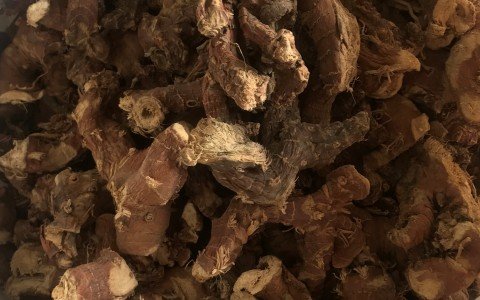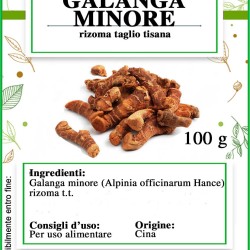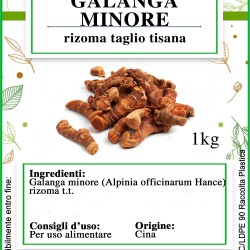
I benefici e gli usi della Pianta Galanga: Scopri le proprietà terapeutiche di questa meraviglia naturale
Benvenuti a tutti coloro che desiderano scoprire i benefici e gli usi della pianta Galanga.
Conosciuta da secoli per le sue proprietà terapeutiche, questa meraviglia naturale offre una vasta gamma di benefici per la salute e il benessere.
La Galanga, membro della famiglia dello zenzero, è originaria del Sud-est asiatico ed è stata utilizzata nella medicina tradizionale per trattare una serie di disturbi.
Grazie alle sue potenti proprietà antinfiammatorie, antiossidanti, antibatteriche e analgesiche, la pianta Galanga può aiutare a migliorare la digestione, stimolare il sistema immunitario, ridurre l'infiammazione e promuovere la salute cardiovascolare.
Ma non è tutto: la Galanga ha dimostrato di avere anche effetti positivi sul sistema nervoso, contribuendo a ridurre lo stress, migliorare la memoria e combattere la depressione.
Inoltre, viene ampiamente utilizzata nell'industria cosmetica per le sue proprietà antibatteriche e antifungine, rendendola un ingrediente naturale ideale per la cura della pelle e dei capelli.
Scopri tutti i modi in cui puoi incorporare la Galanga nella tua vita quotidiana per sfruttare i suoi straordinari benefici.
Che tu sia un appassionato di erbe naturali o semplicemente alla ricerca di nuovi modi per migliorare la tua salute, la pianta Galanga è sicuramente un tesoro da scoprire.
Introduzione alla pianta Galanga
Scientificamente nota come Alpinia officinarum, è una pianta perenne appartenente alla famiglia dello zenzero.
Originaria del Sud-est asiatico, è stata utilizzata per secoli nella medicina tradizionale cinese e ayurvedica per trattare una vasta gamma di disturbi.
La pianta cresce fino a un'altezza di circa 2 metri ed è caratterizzata da foglie a forma di lancia e fiori bianchi o rosa.
Usi storici della pianta Galanga
E' stata utilizzata per scopi medicinali e culinari fin dall'antichità.
Nell'antica medicina cinese, veniva spesso utilizzata per trattare disturbi digestivi, come nausea, vomito e indigestione.
Inoltre, veniva impiegata per alleviare il dolore e l'infiammazione.
Nella medicina ayurvedica, invece, era utilizzata per trattare disturbi respiratori, come tosse e congestione.
Proprietà medicinali della Galanga
Ricca di composti attivi che conferiscono alla pianta le sue proprietà terapeutiche.
Uno dei principali composti presenti nella pianta è il gingerolo, che possiede potenti proprietà antinfiammatorie e antiossidanti.
Questo composto aiuta a ridurre l'infiammazione nel corpo e a proteggere le cellule dai danni dei radicali liberi.
Nota per le sue proprietà antibatteriche e antifungine, che la rendono efficace nel trattamento di infezioni batteriche e fungine.
Migliora la digestione stimolando la produzione di enzimi digestivi e riducendo i sintomi di disturbi digestivi come la flatulenza e il gonfiore.
Galanga nella medicina tradizionale
Ampiamente utilizzata nella medicina tradizionale cinese e ayurvedica per secoli.
Nella medicina cinese, la pianta viene spesso utilizzata per trattare disturbi digestivi, come nausea, vomito e diarrea.
Viene impiegata per alleviare il dolore e l'infiammazione, grazie alle sue proprietà antinfiammatorie e analgesiche.
Nella medicina ayurvedica, viene utilizzata per trattare una vasta gamma di disturbi, tra cui disturbi respiratori, artrite, reumatismi e disturbi del sistema digestivo.
Viene spesso prescritta come rimedio naturale per migliorare la digestione e ridurre l'infiammazione nel corpo.
Usi culinari della Galanga
Oltre ai suoi benefici per la salute, è anche ampiamente utilizzata nella cucina asiatica per il suo sapore unico e speziato.
Le radici vengono spesso utilizzate per aromatizzare zuppe, curry, salse e piatti a base di carne o pesce.
Il suo sapore pungente e piccante aggiunge profondità e complessità ai piatti, rendendoli irresistibili al palato.
Viene spesso utilizzata come sostituto dello zenzero nella cucina asiatica, ma ha un sapore più piccante e terroso.
È possibile utilizzare la pianta fresca o secca, a seconda delle preferenze personali e della disponibilità degli ingredienti.
Galanga nella cura della pelle e dei capelli
Oltre ai suoi usi medicinali e culinari, è anche ampiamente utilizzata nell'industria cosmetica per i suoi benefici per la pelle e i capelli.
Grazie alle sue proprietà antibatteriche e antifungine, la Galanga può aiutare a prevenire l'acne e altre infezioni cutanee.
Inoltre, ha proprietà tonificanti e astringenti che possono aiutare a ridurre l'aspetto dei pori dilatati e a migliorare la testar della pelle.
Utilizzata anche per la cura dei capelli.
Grazie alle sue proprietà antibatteriche, può aiutare a prevenire infezioni del cuoio capelluto e a mantenere i capelli sani e forti. Inoltre, riduce la forfora e a stimola la crescita dei capelli.
Coltivazione e raccolta della Galanga
Può essere coltivata in climi tropicali e subtropicali, preferibilmente in terreni ricchi di sostanza organica e ben drenati.
La pianta richiede un'esposizione al sole e temperature moderate per crescere e prosperare.
Può essere propagata tramite divisione dei rizomi o tramite talee.
Una volta coltivata, la pianta richiede cure regolari, tra cui irrigazione adeguata, concimazione e protezione dalle infestazioni di parassiti.
La raccolta avviene generalmente dopo 8-10 mesi dalla semina.
I rizomi possono essere raccolti, puliti e utilizzati freschi o essiccati per un uso successivo.
Come preparare e utilizzare la Galanga a casa
Prepararla all'uso, i rizomi possono essere puliti, sbucciati e tagliati a fette sottili o grattugiati.
La pianta può essere utilizzata fresca o secca, a seconda delle preferenze personali e delle ricette.
Può essere utilizzata come spezia per aromatizzare zuppe, curry, salse e piatti a base di carne o pesce.
Può essere aggiunta direttamente ai piatti o utilizzata come ingrediente per preparare un tè o una tisana.
Per utilizzarla nella cura della pelle e dei capelli, è possibile preparare un decotto o un infuso utilizzando i rizomi freschi o secchi.
Il decotto può essere utilizzato come tonico per la pelle o come risciacquo per i capelli dopo lo shampoo.
Possibili effetti collaterali e precauzioni
Sebbene sia generalmente considerata sicura quando utilizzata in quantità moderate, è importante fare attenzione a eventuali reazioni allergiche.
Alcune persone potrebbero essere allergiche alla pianta Galanga e potrebbero manifestare sintomi come eruzioni cutanee, gonfiore o difficoltà respiratorie.
E' sempre consigliabile consultare un professionista della salute prima di utilizzarla come rimedio naturale, soprattutto se si soffre di condizioni mediche preesistenti o si sta assumendo farmaci.
Conclusioni: Abbracciando il potere della Galanga per la salute e il benessere
La pianta è davvero una meraviglia naturale, con una vasta gamma di benefici per la salute e il benessere.
Grazie alle sue proprietà terapeutiche, può aiutare a migliorare la digestione, ridurre l'infiammazione, stimolare il sistema immunitario e promuovere la salute cardiovascolare.
Ha dimostrato di avere effetti positivi sul sistema nervoso, contribuendo a ridurre lo stress, migliorare la memoria e combattere la depressione.
È anche ampiamente utilizzata nell'industria cosmetica per le sue proprietà antibatteriche e antifungine.
Se sei un appassionato di erbe naturali o semplicemente alla ricerca di nuovi modi per migliorare la tua salute, ti consigliamo vivamente di scoprire i benefici e gli usi della pianta Galanga.
Sia che tu la utilizzi come spezia in cucina o come ingrediente per la cura della pelle e dei capelli, è sicuramente un tesoro da scoprire e sfruttare per il tuo benessere generale.



